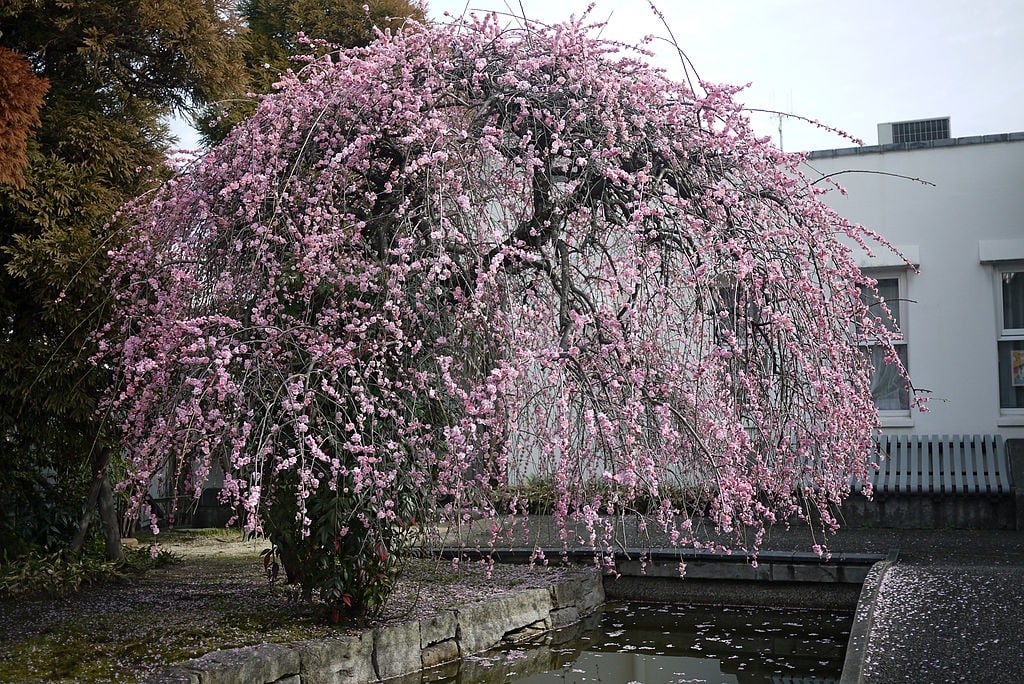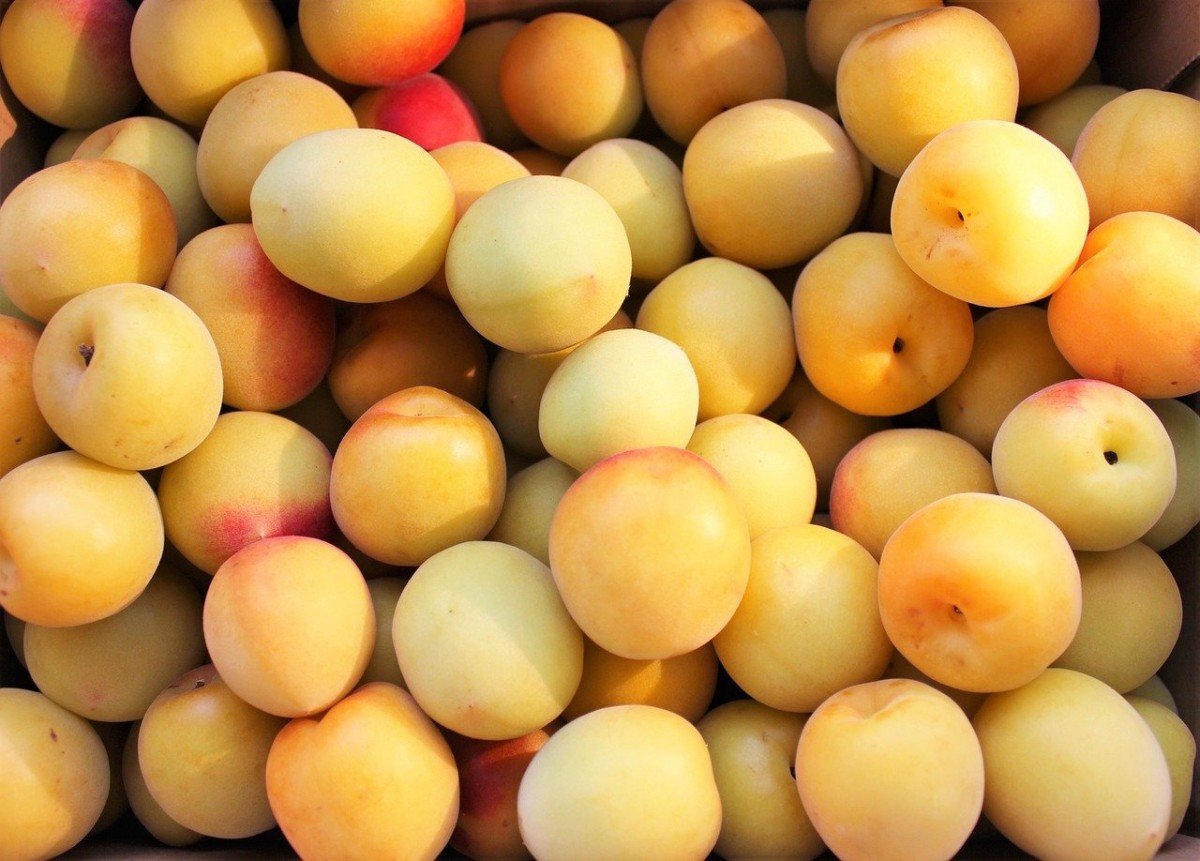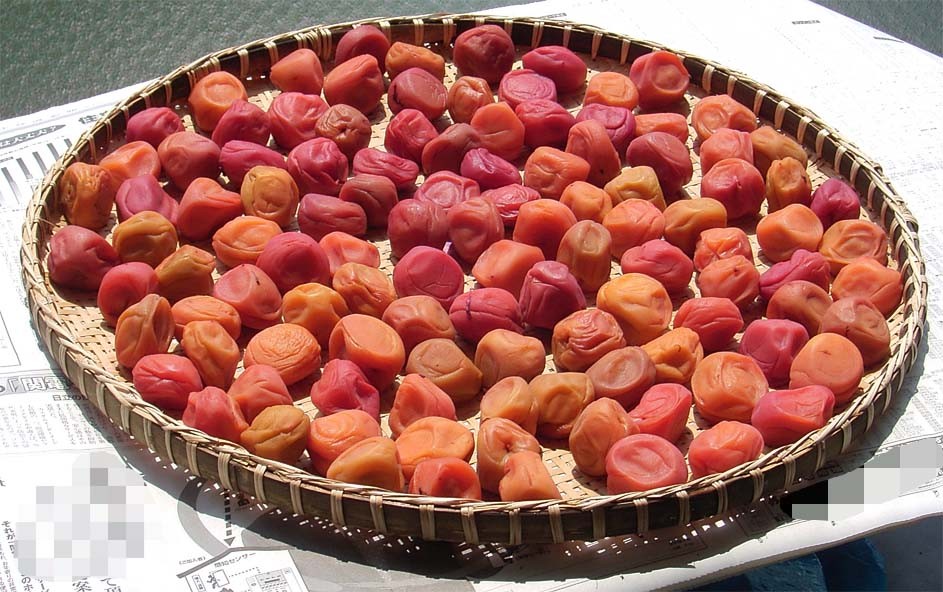Ume [梅] is a Japanese name for Prunus mume, a species of Asian plum from the Rosaceae family. The tree belongs to East Asia and Southeast Asia and is also known as Chinese plum, Japanese plum, or Japanese apricot.
The plum blossom is quite commonly seen in paintings and poetic quotes. In addition, it has a variety of preparation methods such as drinks, alcohol condiments, sauces, and even for traditional medicine. The consumption of plums in these forms is more common in 日本, 中国, 韓国, and ベトナム.
The tree that produces the fruit originated in southern China, more specifically in the Yangtze River and then spread to more places. The blooming of the tree in late 冬と春の初め is considered a seasonal symbol. It can be found in more remote forests, the banks of streams, wooded slopes along trails, and mountains. Usually at altitudes that commonly range from 1,700–3,100 meters and cultivation regions.
Ume begins to bloom in mid-winter, normally around January to the end of February in East Asia and its size can measure from 4 to 10 meters, with well-fragrant flowers and colors that vary between shades of white, pink and red.. The fruit is in the beginning of summer (between the months of June and July). various shades of white, pink and red.

Table of Content
Curiosities of Ume
The Japanese plum has the scientific name of prūnus and can be called Ume or Mume. Another alternative name is mei. In Japan, the ornamental cultivars of Prunus mume are classified into types: yabai (wild), hibai (red), and bungo (Bungo province). The varieties of yabai, the Nankoume has its fruits used to make umeboshi (Japanese pickled plum).
It is common in Japan and China for the Ume tree to be planted in the garden of houses, because according to superstitions it means luck and wards off evil spirits. Ume is also beneficial for health as it has vitamin C, calcium, potassium, dietary fiber, and is low in fat and calories.
Umeboshi (fermented plum) and an alcoholic drink called Umeshu are made from Ume. And there is also the 'belief' that eating Umeboshi for breakfast will make bad luck and misfortunes go away.
For medicinal purposes, mainly in China, it is effective to treat bacteria that cause oral diseases such as cavities and also gastrointestinal problems such as gastritis and gastric ulcers.
Wakayama Prefecture is known in Japan for the quantity and quality of ume and umeboshi. The city of Minabe is the most productive in terms of fruit.

Umeboshi: the salted plum
Umeboshi is a pickled plum with a sour, salty taste. There are also sweets made from this variation of the fruit made with honey and served as an accompaniment in rice balls and without removing the pit.
Umeboshi is round and can be smooth or wrinkled like raisins. Ume is harvested as soon as it ripens and packed in barrels with 20% of salt per fruit weight and left for two weeks. The liquid that comes out is marketed as umezu or ume vinegar. It is also used for a very common Japanese remedy for flu-like symptoms along with okayu.

Umeboshi has been used since the samurai era to combat fatigue after battles due to its salt and citric acid content among other factors. It is commonly used to compose culinary dishes for flavor and presentation. Additionally, it can be served with the beverage called shochu and hot water.
In the United States and Australia, the fruit is canned and consumed at snack time. In Japan eating umeboshi corresponds to the English expression “an apple a day”. Children's candy stores sometimes have the option of karikari ume, or pre-packaged, crispy pickled ume, and dry umeboshi.
Umeshu: The Japanese Plum Drink
Umeshu is the drink made from Ume and for general use the unripe plum is the best option. Sugar and rice alcohol (shochu) are added. The production season takes place in the months of June in Japan.
The drink was consumed as a medicine for the treatment of sore throats. But, now it has become a popular alcoholic drink and the Japanese used to make it at home.

Revenue
Ingredients
- 1kg of plum;
- Half a kilogram of sugar;
- 2 liters of fruit juice
- Filtered water;
Instructions on how to make
Soak the ume in filtered water for eight to twelve hours to remove the bitter taste of the fruit. Then discard the water and wash the plums under running water. Put the green ume in a jar with the sugar (preferably in stone) with the shochu.
If you opt for granulated sugar, it is recommended to shake the jar once a day. If you prefer, you can use brown sugar in the kokuto style. The container must be tightly closed and rest in a dark place for at least six months. But, the ideal waiting time is one year.
The mixture can be made with any alcoholic beverage. However, shochu is the most used and indicated. Umeshu can be consumed with ice, pure, with water (mizuwari), with green tea (ochawari), with hot water (oyuwari), with soda or tonic.
Have you tried or want to know the Japanese plum?
